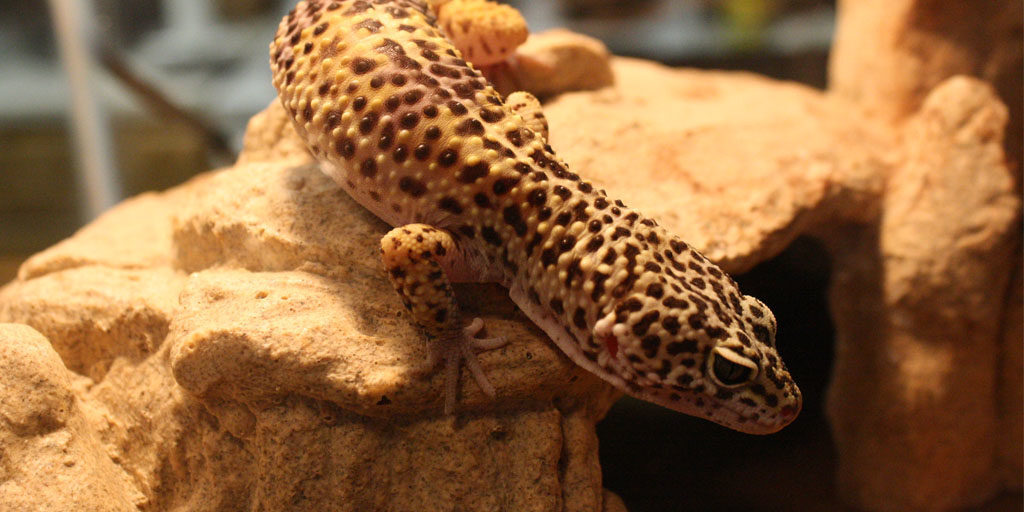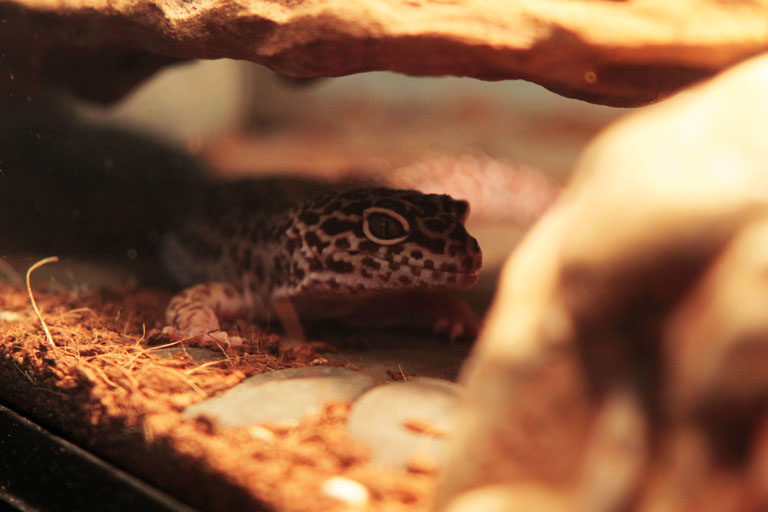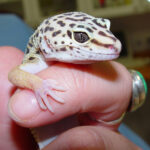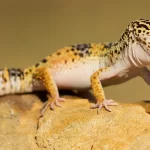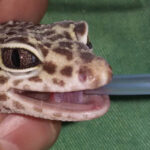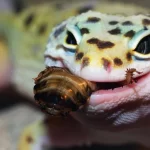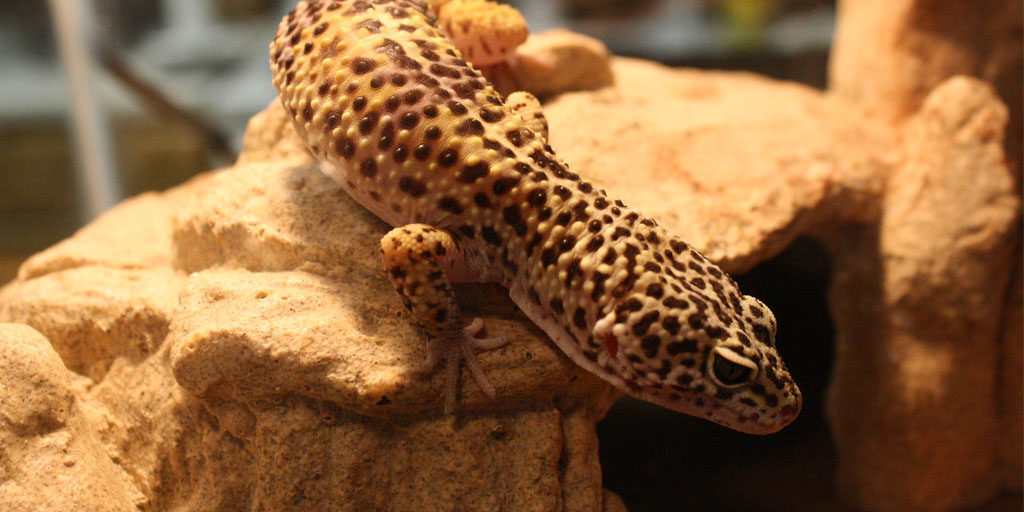
Being nocturnal creatures (mostly active at night), Leopard geckos will not only need a place to hide when they are shy, but also a place to sleep during the day. In nature, Leopard geckos will hide away in tunnels and holes under the sand. Although the desert they live in is quite warm on the surface, it is cool and moist underneath. This is the type of hiding that needs to be created for pet Leopard geckos.
Hiding spots can be supplied in various forms. Special hide boxes (see later) will also aid in healthy shedding, help increase the humidity and serve as a place for females to safely deposit eggs.
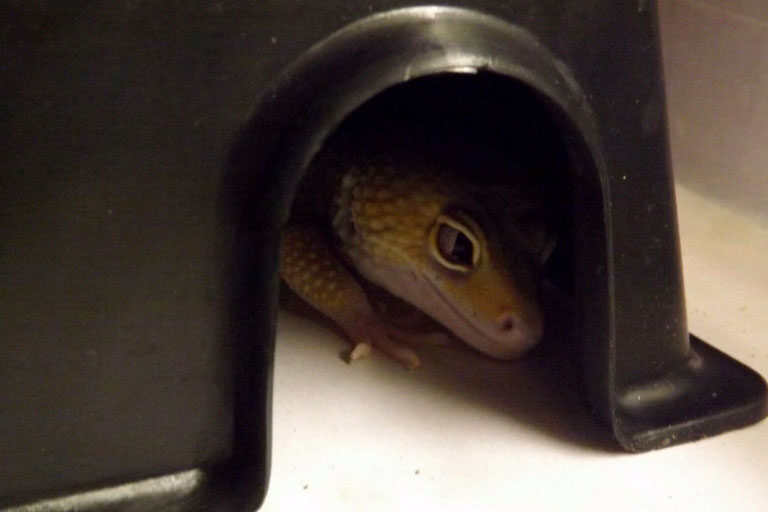 Example of a simple Leopard gecko hide box. Available from Amazon.com
Example of a simple Leopard gecko hide box. Available from Amazon.com
Various commercial Leopard gecko hiding products and caves are available from Amazon.com, pet shops, reptile retailers and other online shops.
What is a Leopard gecko hide box?
In its simplest form, a hide box for Leopard geckos is a box, or smaller container, with an opening large enough to allow access to the inside. One or more hide boxes can be permanently placed on the inside of Leopard gecko enclosures too, as the name implies, supply areas to hide in.
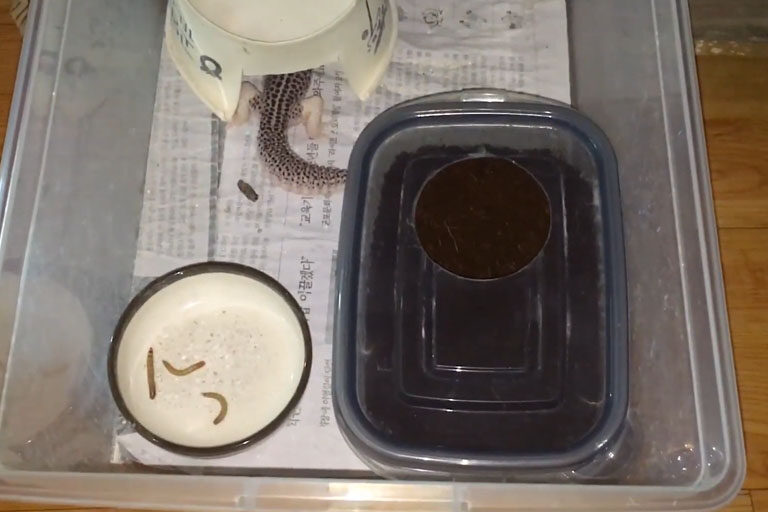 Examples of simple, home-made hiding areas for Leopard geckos. The hiding spot on the top is a simple plastic container with a large opening. The hide box on the bottom is a container with a large opening in the lid and is filled with a moist substrate. Image Korean Gardener (CC BY YouTube)
Examples of simple, home-made hiding areas for Leopard geckos. The hiding spot on the top is a simple plastic container with a large opening. The hide box on the bottom is a container with a large opening in the lid and is filled with a moist substrate. Image Korean Gardener (CC BY YouTube)
Different types of hiding for Leopard geckos
Hiding areas for Leopard geckos can be supplied in various forms. A simple hiding area can be in the form of an upside-down plastic container with an opening. Other items, such as decorative rocks, wood, cardboard and plastic materials can also be stacked and decorated to create tunnels and cave-like structures.
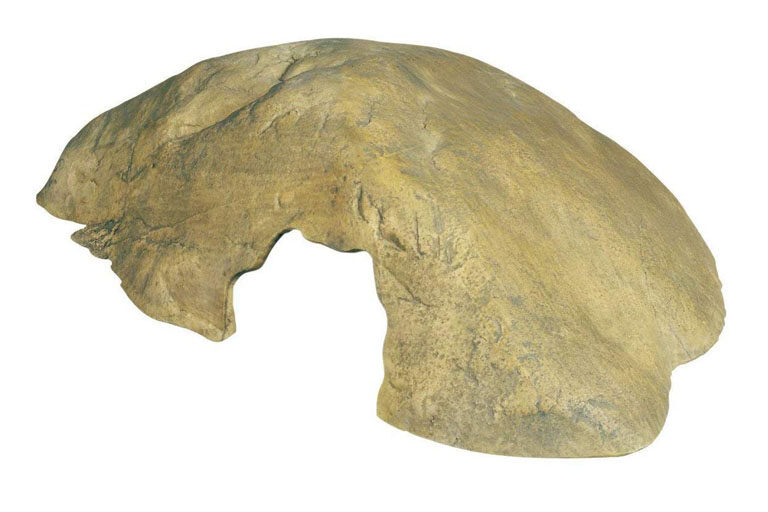 Simple commercial hiding cave for Leopard geckos. Available from Amazon.com
Simple commercial hiding cave for Leopard geckos. Available from Amazon.com  Hiding spot in the form of a decorative stomp. Available from Amazon.com
Hiding spot in the form of a decorative stomp. Available from Amazon.com
More advanced hide areas floored with a moist substrate are also required. These are usually waterproof containers or boxes filled with a moist layer of vermiculite or peat or sphagnum moss mixtures. In addition to hiding, these types of hiding areas also supply a place for females to deposit their eggs (see breeding boxes below) and will aid in skin shedding. Also see suitable substrates for Leopard geckos, Leopard gecko breeding and skin shedding problems for more information.
What makes a good Leopard gecko hide box?
Things to consider when choosing hiding areas for Leopard geckos are its size, the size of the main enclosure, ability to clean, aesthetics and its purpose. The hiding area should be large enough to simultaneously fit all the Leopard geckos comfortably. The opening should also be large enough, but not too large, to allow easy access.
Although Leopard geckos are not known to soil the areas they sleep in, the hiding areas should still be washed and disinfected from time to time (at least once a month). Old and mouldy hide box substrates should also be replaced regularly. If disposable hiding areas are not used, it is advised to invest in materials (e.g. plastics) that can be easily washed and sundried.
Breeding boxes for Leopard geckos
Breeding boxes for Leopard geckos are ‘specialised’, or more advanced hide boxes with the purpose of supplying a place for females to lay their eggs in. Without exception, the setup of breeding boxes is similar to more advanced hide boxes discussed earlier. Also see Leopard gecko breeding more information.
Where to place Leopard gecko hide areas
Very often one or two hide areas are enough for most Leopard geckos. More hiding areas can be placed in various locations in larger enclosures. When heating equipment is used, hiding areas should preferably be placed in the cooler and in the warmer areas of the main enclosure.

